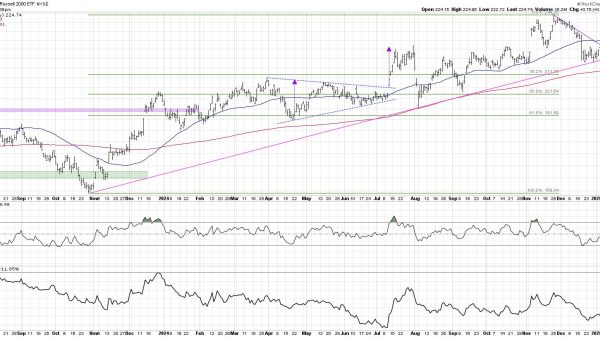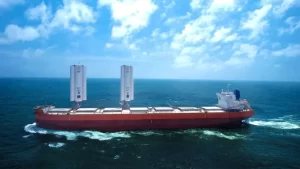The world’s first cargo ship fitted with giant, rigid sails – a groundbreaking innovation by BAR Technologies – has embarked on its inaugural voyage.
This pioneering venture, led by global shipping firm Cargill, may mark the beginning of a seismic shift towards a sustainable future for the maritime industry.
The newly launched Pyxis Ocean is a testament to the potential of wind power in significantly reducing the shipping industry’s carbon footprint. The maritime sector is currently responsible for approximately 2.1% of global CO2 emissions, a figure that the industry is keen to reduce.
The WindWings sails, engineered to minimise fuel consumption, could potentially reduce a cargo ship’s lifetime emissions by up to 30%. This voyage from China to Brazil will provide the first real-world test of the WindWings, offering an opportunity to assess the viability of returning to traditional wind propulsion for maritime cargo transportation.
“The maritime industry is on a journey to decarbonise–it’s not an easy one, but it is an exciting one,” said Jan Dieleman, President of Cargill’s Ocean transportation business.
When docked, the WindWings sails are folded down, but once the vessel hits open waters, they are fully extended. These sails, measuring a towering 37.5m in height, are constructed from the same sturdy material used in wind turbines, ensuring their durability.
The WindWings technology was developed by UK-based firm BAR Technologies, a company spun out from Sir Ben Ainslie’s 2017 America’s Cup team, often hailed as the ‘Formula One of the seas’. This innovative technology allows a vessel to harness the power of the wind, reducing its reliance on its engine.
The Pyxis Ocean’s maiden voyage is expected to take approximately six weeks. This journey will provide crucial data and insights into the effectiveness of the WindWings technology in real-world conditions. This information will be invaluable in fine-tuning the design and operation of these sails for future scalability across the shipping industry.
“I do predict by 2025 half the new-build ships will be ordered with wind propulsion,” said John Cooper, Chief Executive Officer, BAR Technologies.
BAR Technologies, a firm with roots in competitive sailing and Formula One racing, has leveraged high-end simulation tools and AI design optimisation to develop the WindWings. The company’s leadership team includes former Formula One personalities and America’s Cup designers and engineers, lending significant weight to its credibility in this pioneering endeavour.
According to simulations, the WindWings can achieve up to a 30% reduction in fuel consumption and CO2 emissions under average trading patterns. This figure could be even higher if the technology is used in conjunction with alternative fuels. Over the next four years, BAR Technologies and manufacturing partner Yara Marine Technologies plan to construct hundreds of these sails.
“Wind is a near marginal cost-free fuel and the opportunity for reducing emissions, alongside significant efficiency gains in vessel operating costs, is substantial,” said John Cooper, CEO of BAR Technologies.
The Shipping Industry’s Green Transition
The shipping industry faces a significant challenge in transitioning to more sustainable practices. While alternative fuels such as green hydrogen, ammonia, and methanol are being explored, these options are unlikely to be viable before 2030 due to various challenges. In the interim, operational measures such as retrofitting vessels with sails and other wind-assisted technologies are critical.
“Ultimately we do need zero-carbon fuels on all ships, but in the meantime, it is imperative to make every journey as efficient as possible. Slower speeds are also a critical part of the solution,” said Dr Simon Bullock, shipping researcher at the Tyndall Centre, at the University of Manchester.
The shipping industry does not yet have a clear decarbonisation pathway. Given the scale of the challenge and the diversity of the world shipping fleet, there is unlikely to be a single solution for the industry in the short or medium term. However, the use of wind-assisted technology in the form of WindWings represents a promising step towards a greener future.
John Cooper, of BAR Technologies, is optimistic about the future of wind wings in the maritime industry. Cooper takes particular satisfaction in the idea of the shipping industry returning to its roots, stating, “The invention of big combustion engines destroyed the trade routes and the sailing routes and now, we’re going to try to reverse that trend, just a bit.”
Read more:
Pioneering wind-powered cargo ship sets sail























